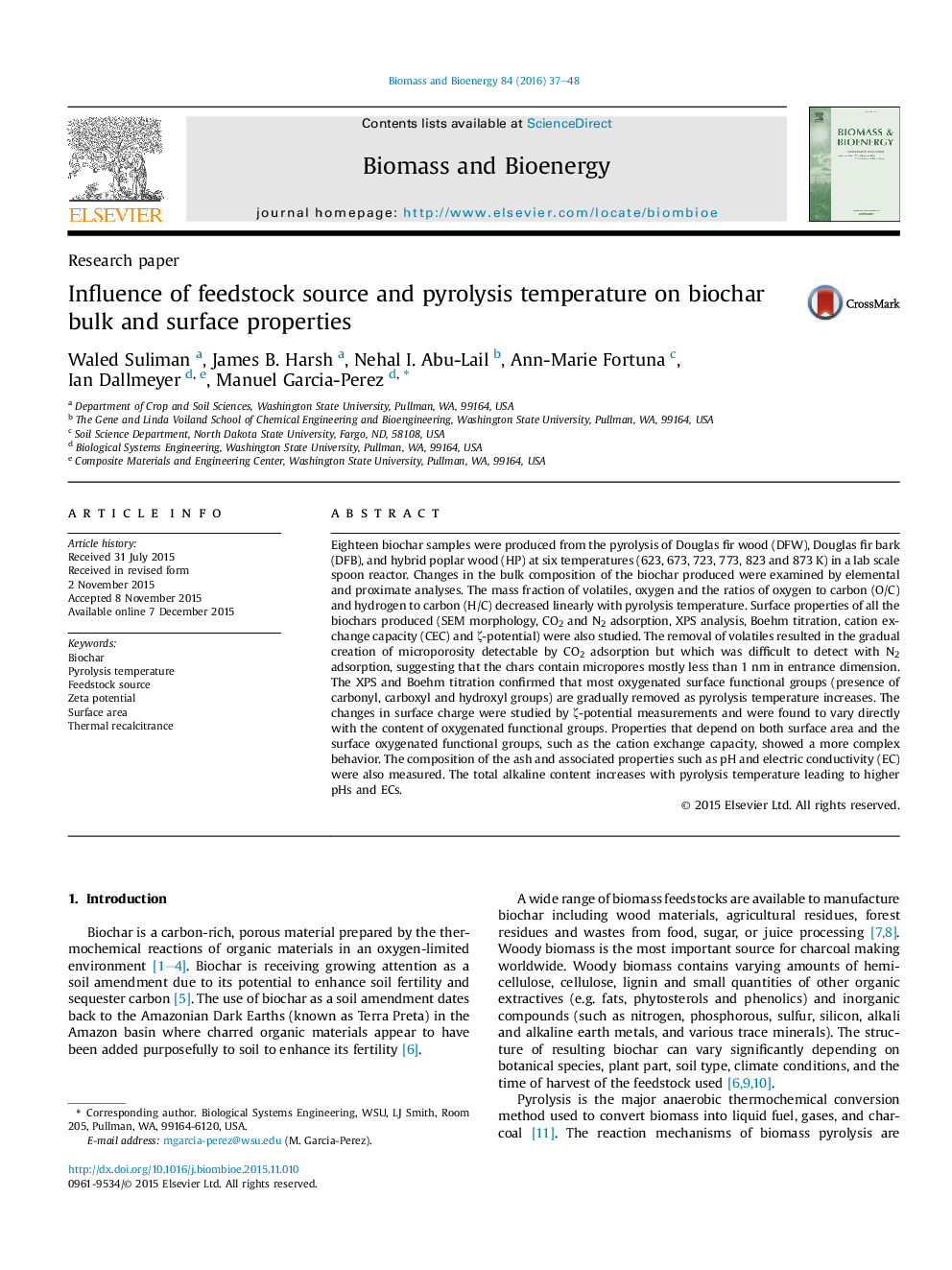| Article ID | Journal | Published Year | Pages | File Type |
|---|---|---|---|---|
| 676720 | Biomass and Bioenergy | 2016 | 12 Pages |
Abstract
Eighteen biochar samples were produced from the pyrolysis of Douglas fir wood (DFW), Douglas fir bark (DFB), and hybrid poplar wood (HP) at six temperatures (623, 673, 723, 773, 823 and 873 K) in a lab scale spoon reactor. Changes in the bulk composition of the biochar produced were examined by elemental and proximate analyses. The mass fraction of volatiles, oxygen and the ratios of oxygen to carbon (O/C) and hydrogen to carbon (H/C) decreased linearly with pyrolysis temperature. Surface properties of all the biochars produced (SEM morphology, CO2 and N2 adsorption, XPS analysis, Boehm titration, cation exchange capacity (CEC) and ζ-potential) were also studied. The removal of volatiles resulted in the gradual creation of microporosity detectable by CO2 adsorption but which was difficult to detect with N2 adsorption, suggesting that the chars contain micropores mostly less than 1 nm in entrance dimension. The XPS and Boehm titration confirmed that most oxygenated surface functional groups (presence of carbonyl, carboxyl and hydroxyl groups) are gradually removed as pyrolysis temperature increases. The changes in surface charge were studied by ζ-potential measurements and were found to vary directly with the content of oxygenated functional groups. Properties that depend on both surface area and the surface oxygenated functional groups, such as the cation exchange capacity, showed a more complex behavior. The composition of the ash and associated properties such as pH and electric conductivity (EC) were also measured. The total alkaline content increases with pyrolysis temperature leading to higher pHs and ECs.
Related Topics
Physical Sciences and Engineering
Chemical Engineering
Process Chemistry and Technology
Authors
Waled Suliman, James B. Harsh, Nehal I. Abu-Lail, Ann-Marie Fortuna, Ian Dallmeyer, Manuel Garcia-Perez,
